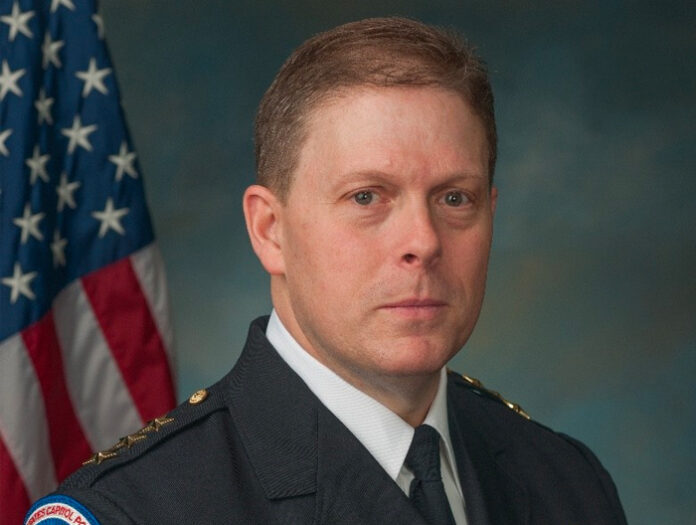
Guest Editorial by Chief Steven Sund, Best selling Author, Congressional Gold Medal Recipient, Former Chief of Police, Public Speaker, Leadership Training, Critical Incident, and Special Event Management
“Shots fired, shots fired! Officer down at Missouri and Georgia avenues NW.”
It was early morning on the midnight shift on February 5, 1997. I was a lieutenant and the Watch Commander at the Fourth Police District for the Metropolitan Police Department in Washington, D.C.
To a police officer, this is the most distressing call you will ever hear on the radio. This call immediately puts you into a fight-or-flight response. Who is it? How bad? Can we get there in time? Is the threat neutralized, or are we walking into something?
As these thoughts race through your head, your adrenal glands flood your system with adrenaline, your heart races, your pupils dilate, your veins begin to constrict, and you become hypervigilant, preparing your body for what is to come.
Seconds later, I am running full speed out of the office with another lieutenant; Mario Patrizio. Within moments we arrive at the scene. Just 100 yards from the station, while at a red light, one of our officers, Brian Gibson has been shot.
Mario and I helped officers pull him out of his police car, and assisted in removing his bloodied shirt and vest. As I quickly tore off the Velcro straps of his vest and pulled it over his head, I could see he had sustained multiple gunshot wounds to the upper body and head.
Mario begins administering first aid. We need to get Brian to the hospital immediately. We call for an ambulance, but it’s taking too damn long. We are going to have to get him there ourselves. We lifted Brian. He was still breathing.
I grabbed his legs, and we put him into the backseat of another police car. I shut the door, and Mario and I stood in the street with blood on our white shirts and sleeves as we watched them speed off toward the nearby Washington Hospital Center.
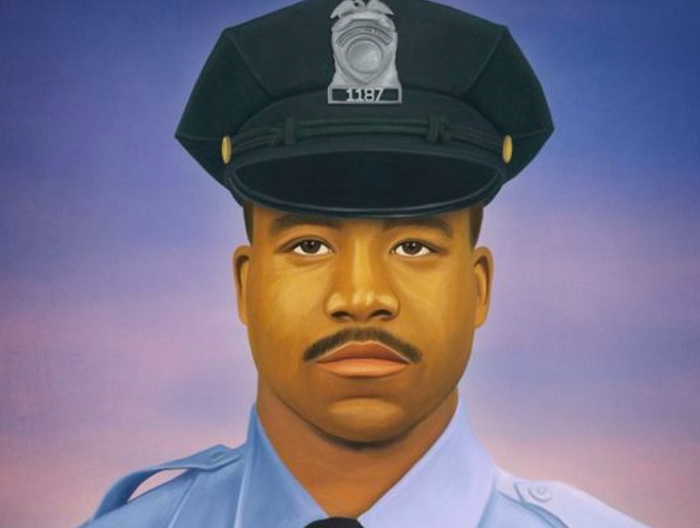
Later that morning, 27-year-old Master Patrol Officer Brian Gibson, a highly respected officer, succumbed to his injuries.
Brian was a mentor to other officers and was truly loved by everyone he worked with on the midnight shift.
His life was cut short by a cold-blooded vindictive coward, who shot him with a .45 caliber handgun fired just inches from his body. This execution wasn’t personal. It could’ve been any one of us that night.
Brian was assassinated as he sat in his marked patrol car solely because of the uniform he wore – and the authority he represented. His death profoundly affected me, the department, and the community he served.
I still remember the incredible outpouring of support at his funeral and the flowers surrounding his police car, draped in black, parked in front of the police station.
People lined the streets and bridges along the route to the cemetery, saluting the motorcade of police vehicles as we passed by. Police funerals are always very difficult, and I’ve been to far too many, but Brian’s was especially emotional and immensely impacted me.
It didn’t have to happen. It shouldn’t have happened.
(Ms. Shirley Gibson lost her son, Master Patrol Officer Brian T. Gibson, who was killed in the line of duty in 1997. She is the first President of the National Concerns of Police Survivors (COPS). COPS honors police officers who were killed in the line of duty. She was also the first mother of a deceased officer to serve as President in the 25 years that this organization has been in existence. COPS is operated by survivors of police officers. She gives caring words of advice to the youth. Courtesy of iiwiitalkshow111 and YouTube. Posted on May 10, 2010.)
Fast forward 24 years to January 6, 2021, when thousands of rioters attacked my officers at the United States Capitol.
This was one of the worst attacks on law enforcement by rioters I had seen in my 30-year law enforcement career.
It was vicious, cruel, and gruesome. This attack would go on for hours. It was televised live around the world and resulted in the injury of over 170 police officers and contributed to the death of both protesters and police officers.
The next day, the Speaker of the House of Representatives called for my resignation on National Television.
She was not interested in the facts surrounding the attack; she just needed a head on a platter. Politics always demand someone take the rap.
(Warning: Age-Restricted Video. Chairman Rep. Bennie Thompson presented graphic video from police body cameras and audio of law enforcement calling for assistance as Trump supporters stormed the Capitol on Jan. 6, 2021. Courtesy of NBC News and YouTube. Posted on Jun 9, 2022.)
I have had an eventful and unusual 30-year law enforcement career.
I patrolled some of the most dangerous streets, responded to some of the most heinous crimes imaginable, handled more homicides than I can remember, and apprehended some of the most violent criminals on the streets of DC.
And along the way, I have lost several friends in this line of work.
As I rose through the ranks, fate would place me as the incident commander at three DC active shooter incidents, one of which was the notorious 2013 Navy Yard shooting that resulted in the loss of 12 lives.
(Aaron Alexis marched through the Navy Yard going door to door with a sawed-off shotgun in his hand. Courtesy of ABC News and YouTube. Posted on Sep 25, 2013.)
Almost a decade later, I would be the Chief of the U.S. Capitol Police during the unprecedented storming of the U.S. Capitol.
Policing is a very noble and honorable profession. This is a saying that I often hear repeating at recruit graduations, promotions, recruiting events, and during discussions with officers in the field. I truly believe in this motto.
It takes a very special person to become a police officer. The schedule is tough, the work environment can be dangerous, the pay is OK, and you rarely hear a thank you. But that doesn’t bother most cops.
Policing is like no other profession. Every day, you put on protective equipment and carry a cadre of defensive weapons, including lethal force, just to be prepared for the “unknown” each day you go to the “office.”
Policing is under attack, but the world needs good cops.
Society is held together by civility and laws enacted to protect people’s right to feel safe and secure. Without either, society will break down into lawless chaos.
You need good and fair police officers to help protect those who cannot protect themselves and maintain a sense of civility.
We are seeing an unraveling of that sense of civility, that critical thread that adheres the fabric of our society together and provides safety and security.
(Cellphone video captured the moment three Good Samaritans jumped out of their vehicles to help a California Highway Patrol (CHP) officer who was being attacked by a man on the side of a busy freeway onramp. Courtesy of KTLA 5 and YouTube. Posted on May 24, 2023.)
What got me into policing?
Often, people can look back and see that pivotal moment in life that profoundly affected them. For me, that moment came on November 1, 1982. I was sixteen years old.
My father had passed away after a long battle with a rare form of cancer. He was a decorated Air Force B-52 pilot.
We had just arrived home from Arlington National Cemetery, where he had been buried with military honors. My mother received a call from Carol Briggs, who had been my babysitter when I lived in southern California. Carol, now working for the Fremont, California Police Department, came over with her husband, Sgt. Brad Bradanini.
The impression the two of them left with me, their passion for policing and the community they served, left an indelible mark on me that continued to develop over the next several years.
A little over eight years after this meeting, I would be sworn in as a police officer with the Metropolitan Police Department in Washington, D.C.
(New video shows police officer under attack. Courtesy of Click On Detroit | Local 4 | WDIV and YouTube. Posted on Jun 12, 2023.)
History with the MPD
I began the Metropolitan Police Academy on November 5, 1990, and was assigned to the Sixth District (6D) upon graduation six months later. The Sixth District was one of the crime hotspots in a city that had earned the reputation as the “Murder Capital.”
In 1991, Washington D.C., recorded 482 homicides, the highest number on record for the city.
Many of these homicides occurred in the Sixth and Seventh Districts. Right out of the police academy, I was assigned to a special tactics unit to be deployed to the high crime area hot spots in the district.
We were also trained and assigned to the Civil Disturbance Unit, or CDU for short. We would regularly be pulled and deployed to special events and demonstrations in other parts of DC. I mainly worked the 8:00 pm to 4:30 am shift during my first few years.
I was on the street during the high crime times, which was exciting for a young single rookie cop.
It was a rarity that I didn’t respond to a life-threatening attack or homicide every shift. As a result, I regularly found myself in court the next morning after I got off work. I had to present my cases before the Assistant United States Attorney (AUSA) for DC.
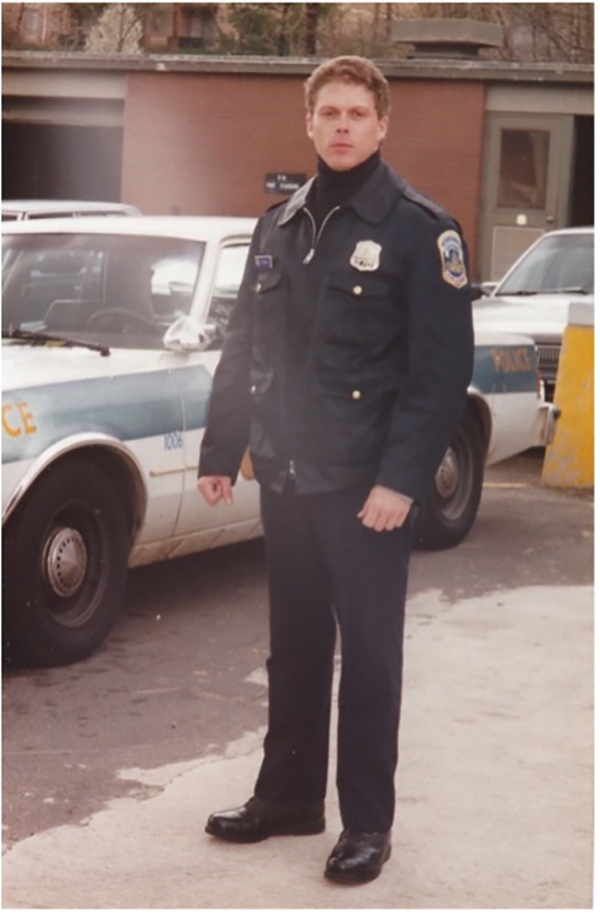
During my time as a 6D officer, I would have my very first assignment working with the United States Secret Service (USSS).
In 1993, former President Jimmy Carter, came to the Sixth District to help build homes as part of Habitat for Humanity. Our tact unit was regularly chosen to handle these special events.
As a rookie officer, I couldn’t have imagined that my career would allow me the opportunity of protecting every living US president.
In 1995, I was promoted to sergeant and assigned to the Seventh District (7D), another crime hot spot in the southeast section of DC. I arrived at the district just days after a tragic case of a fatal blue-on-blue shooting.
An on-duty officer assigned to the Seventh District arrived on a scene late at night where another off-duty officer from the same district had two robbery suspects stopped at gunpoint. The responding officer ordered the off-duty officer to drop his weapon and subsequently shot and killed him when he turned toward the on-duty officer with the gun still in his hand.
This tragedy was compounded by the fact that the off-duty officer who died was the husband of one of my partners when I was an officer. My first several months as a sergeant were tumultuous, working through the officers’ emotions while trying to address a violent epidemic on the streets.
I enjoyed my time as a sergeant working with many of the new officers being assigned to the district straight out of the academy.
Two years later, I would be assigned as a lieutenant at the Fourth District, where I would run a task force piloting a new patrol strategy for the department started under the new Chief of Police at the time; Charles Ramsey. The pilot project proved a success, with my team receiving recognition as a top performer.
In January 1999, Chief Ramsey brought me to work in his office supporting his executive assistance chief, Terrance Gainer. After ten months in his office, Chief Ramsey assigned me to a critical position within MPD’s Special Operations Division, managing all the major events and dignitary protection details in the city.
In this position, I handled everything from the movement of the President and the Vice President, visiting heads of state, demonstrations, parades, presidential inaugurations, and movies that were filmed in the city. As you can imagine, it was a non-stop, 24/7 grind, but I loved it.
I stayed in this position for seven years, developing new operations manuals, implementing new technology, and building the critical relationships necessary to support our operations. Relationships with various federal, state, and local agencies, like the FBI (which was honored in the 2022 ‘ASTORS’ Homeland Security Awards Program, the USSS, the United States Park Police, the Department of Homeland Security’s Federal Protective Service (FPS) (which has been recognized in Multiple Years in the Annual ‘ASTORS’ Homeland Security Awards Program, DC National Guard, and the Department of State.
Local agencies like the DC Fire and EMS Management, Department of Health, Arlington County, Fairfax County, Montgomery County, Prince Georges County Police, and the Maryland and Virginia State Police.
As a lieutenant, I would help plan and manage over sixteen events designated as National Special Security Events (NSSE) by the Department of Homeland Security (DHS). I would also be assigned to write plans to support the city’s response to the Swine Flu and the Avian Flu. This training would help me greatly later in my career when I was the Chief of the Capitol Police and had to deal with the COVID-19 pandemic.
As a result of my special event and mass demonstration planning ability, I was selected to travel around the world with the USSS to study major events and terrorist attacks and become an instructor with their Major Events Division. In this position, I helped train other law enforcement agencies nationwide in special event security.
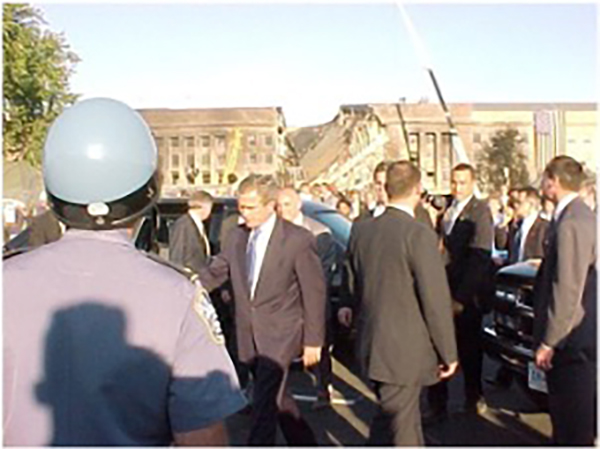
It was during my early years at Special Operations Division (SOD) that the 2001 terrorist attacks occurred on September 11, in New York City and at the Pentagon. I had returned from traveling to Genoa, Italy, with the USSS for the 27th G8 Summit less than two months earlier.
September 11, 2001, was a bright, clear, and pleasantly cool day in Washington D.C, and along most of the east coast, shortly before 9:00 a.m. I walked into the events planning office and saw the television with images of the World Trade Center on fire.
I asked, “what is happening?” One of my planning officers said a plane had crashed into the World Trade Center. I watched the broadcast for a few minutes when my sergeant said, “Lt. Sund, the White House is on the phone for you.” I picked up the phone, still watching the news, and was greeted by USSS Assistant Special Agent in Charge Steve Woodard.
Woodard said, “Steve, you see what’s going on in New York; what are your thoughts? ” Having come from an Air Force family and knowing a little about aircraft and air safety, I said, “I don’t know, Steve, it’s a clear blue sky, and a plane strikes the tallest building in NYC? I am concerned it may not be an accident.”
(On September 11, 2001, 2,973 people died, and thousands were injured as two hi-jacked planes flew into the Twin Towers of the World Trade Center in New York City. Courtesy of SkyNews and YouTube. Posted on Sep 10, 2021.)
Steve Woodard had previously been assigned to the USSS New York Field Office and was involved in the investigation of the 1993 World Trade Center bombing. He echoed my concern, and as we were talking at 9:03 a.m., we saw a second plane crash into the South Tower of the WTC on live national television.
At that point, Woodard stated, “We are calling an emergency meeting at the White House; I need you to come down to the Emergency Operations Center (EOC) immediately.”
After I briefed the SOD Commander and Chief Ramsey, we began implementing emergency security protocols for the District. As I prepared to leave for the White House at 9:37 a.m., I felt a tremor travel through SOD headquarters and heard the old windows rattle in their frames. It was American Airlines flight 77 crashing into the Pentagon.
At that point, I ran to my car and drove the six blocks to the White House with my emergency lights flashing and my siren blaring. As I pulled up, I witnessed dozens of people running out of the White House. I grabbed my bag containing the emergency street closure plans and ran toward the White House and the Old Executive Office Building.
As a result of the attack, I wouldn’t come home for three days as we implemented a number of security enhancements around Washington D.C., the White House, and the US Capitol.
(President George W. Bush, Donald Rumsfeld, and others look back on the attack on the Pentagon on September 11, 2001. Courtesy of HISTORY and YouTube. Posted on Sep 9, 2016.)
In the following days, I handled the security detail for the President of the United States (POTUS) motorcade to the Pentagon. President George W. Bush, his National Security Advisor Condoleezza Rice, and Secretary of Defense Donald Rumsfeld came to observe the recovery efforts and meet with first responders.
While at the SOD, I worked closely with Cathy Lanier, the division’s commander for the last few years of my assignment. In 2006, I was promoted to captain, and Chief Ramsey assigned me to help develop the Department’s new Homeland Security and Counter-Terrorism Bureau. Again, I continued to work closely with Cathy Lanier in this position.
In 2007, Cathy Lanier became the chief of the Metropolitan Police Department, and shortly thereafter, she promoted me to the rank of inspector. In this position, I worked for the next three years streamlining patrol operations and continuing to support the Homeland and SOD operations. In 2008, Chief Lanier assigned me to help plan the 2009 Inauguration of President Obama, the most attended single-day event in Washington DC.
We brought in thousands of police officers from across the country to support our security plan, and due to the anticipated number of spectators, I was designated as the first “Crowd Czar,” for the city. As an inspector, I also spent a short time as the director of the MPD Police Academy, where I conducted a full curriculum review and update.
In 2011, Chief Lanier again promoted me to commander (deputy chief) and assigned me to command the prestigious Special Operations Division, where I oversaw some of the most critical units within the Department, including the Emergency Response Team (SWAT), Special Events/Dignitary Protection Branch, Explosive Ordnance Disposal Unit (Bomb Squad), Domestic Security Operations Unit (CDU/Chem Bio), Aviation and Harbor Unit.
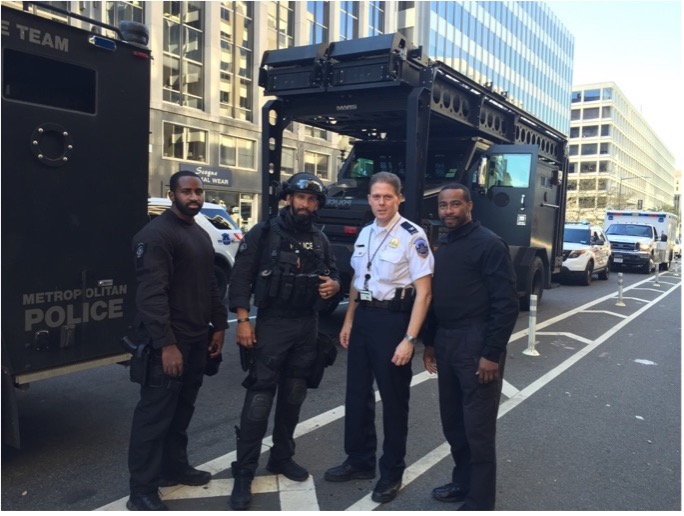
As the commander of SOD, I coordinated major events in the city, planning the 2013 presidential inauguration and the 2015 Papal visit.
I also had the responsibility of being the incident commander on dozens of criminal barricades that required the deployment of our Emergency Response Team. My tenure as SOD Commander was marked with a barricade on my first and last day in this position.
One of my more notable barricades included a standoff with an individual assassinating a prominent community member in front of her home in broad daylight with a .357 magnum handgun. The barricade lasted 31 hours and ended peacefully, with my ERT team stealthily taking the suspect into custody without incident.
Following the Pope’s visit to Washington, D.C., in October 2015, I decided it was time to retire. I enjoyed the work immensely, but it was an around-the-clock assignment. You never knew when you would be recalled to respond into the city. I wanted a little sense of normalcy with my family while my children were still home.
I retired at the end of December 2015 and started working for a non-profit company in Northern Virginia. The job was good, and life was simpler. No late-night call-outs for barricade situations, no more missed holidays or family gatherings due to major events in DC, and no getting dressed at three in the morning to respond with lights flashing and sirens blaring.
But despite all these positives, I still felt the need to return to public service. I missed being a cop. In the fall of 2016, I was asked to become the assistant chief of police at the United States Capitol Police Department. I was brought on board shortly before President Trump’s inauguration in January 2017.
Just over two years later, on June 14, 2019, I was sworn in as the tenth USCP chief of police. Less than 18 months later, I would be faced with thousands of rioters attacking my officers and smashing their way into the United States Capitol, which was occupied by all the members of congress, along with the vice president and his family.
The attack would last for hours and be televised around the globe. My officers were outnumbered 58 to 1. I would call in seventeen law enforcement agencies and over 1,700 police officers, resulting in us regaining control of the Capitol by 6 pm that evening. It was a devastating attack that contributed to the deaths of three police officers and resulted in the shooting death of a rioter by a USCP officer.
The backlash against me and my officers was immediate and unjustified. The media and even members of Congress, the very people we had sworn an oath to protect, came out against us, stating that we were somehow complicit in the attack.
Over 170 officers were injured in the attack, some so serious they will never return to work as a police officer. Not even 24 hours after the attack, the Speaker of the House Nancy Pelosi would go on national television citing false information and call for my resignation, effectively ending a stellar 30-year law enforcement career.
This had a devastating effect on me and my family, and the officers of the USCP who I had developed such a close bond with. Even today, years after leaving the USCP, I still talk to officers regularly.
The bond I developed with my officers, I believe, came from my management style.
I would often spend time in the field, getting to know my officers and the issues they faced. If a bonified issue impacted their working environment, I would do what I could to address it as quickly as possible.
I was fair but by the book. I held people accountable and wasn’t afraid to explain why I upheld or implemented certain disciplines.
I believe the officers respected someone who could apply real-world experience to their issues.
(Learn More. One of the darkest days in American history became an extraordinary story of courage under fire. Courage under Fire is United States Capitol Police Chief Steven A. Sund’s gripping personal account that takes readers inside the events leading up to January 6 and provides a detailed and harrowing minute-by-minute account of the attack on the US Capitol, which was valiantly defended in hand-to-hand combat by the US Capitol Police officers who found themselves outnumbered fifty-eight to one. Courage under Fire contains never-before-seen photographs and draws upon audio recordings, key documents, and government records as it traces Sund’s extraordinary journey from his command post on January 6 to his explosive behind-closed-doors testimony before the January 6 committee. Courtesy of Blackstone Publishing and YouTube. Posted on Oct 26, 2022.)
Personal Life
Shortly after graduating from the police academy, I met my future wife, Maria. We were married in 1993, and she has been my rock, mentor, driving force, and best friend ever since.
We have three children, and recently celebrated our 30th wedding anniversary. After we got married, she pushed me to return to college. I applied and was accepted to the Johns Hopkins University in Baltimore, Maryland. I graduated from Hopkins with a BS and then an MS.
I continued pursuing educational opportunities and in 2014 I received a second MS from the Naval Postgraduate School’s Center for Homeland Defense and Security (which has also been Honored in the Annual ‘ASTORS’ Homeland Security Awards Program.
In 2019, I graduated from the 42nd session of the FBI’s National Executive Institute.
In my free time, I enjoy working on cars. Everything from classic muscle cars to BMW, Mercedes, and Porsches. I also love spending time with and teaching my kids how to do basic maintenance on their cars.
Besides providing some good bonding time, I believe it is an important life skill to have.
Conclusion
As you can see, I have had a very rewarding, exciting, and unusual career in policing. I have done everything from capturing homicide suspects to escorting the Pope. I have pulled bodies out of the woods and the Anacostia river.
I have handled major demonstrations with hundreds of thousands protestors, and I have responded to four active shooter events. The latest being the 2017 attack on the republican members of congress practicing baseball in Alexandria, Virginia.
I have always been an optimistic person, and I believe these qualities have taken me to the heights of my career and certainly helped me survive the bad times. I firmly believe in the rule of law and the truth.
As more facts come out about January 6, people will see the steps I took in advance to better secure the Capitol, and the repeated delays and issues I faced trying to get federal assistance while we were under attack.
January 6 is the perfect example of why politicians should stay out of security and law enforcement. Let those with experience make the security decisions.
Instead, I was restricted by a federal law passed by Congress that prevented me from bringing in federal resources without first obtaining the approval of the Capitol Police Board and congressional leadership.
A law which, for the most part, still stands today, over two years after January 6, 2021.
(Steven Sund was the chief of the Capitol Police during the January 6 attack on the U.S. Capitol, and he described the events as “the worst mass attack on law enforcement” in his nearly 30-year-long career. Sund joined Geoff Bennett to discuss his new book on the attack, “Courage Under Fire.” Courtesy of PBS NewsHour and YouTube. Posted on Jan 4, 2023.)
To learn more, please see “Courage Under Fire” – available in hardback, Kindle, or Audiobook Editions on Amazon at https://www.amazon.com/Courage-Under-Fire-Outnumbered-January/dp/B0BGJHNBSK.
As per Amazon…
Courage Under Fire is United States Capitol Police Chief Steven A. Sund’s gripping personal account that takes readers inside the events leading up to January 6, and provides a detailed and harrowing minute-by-minute account of the attack on the US Capitol, which was valiantly defended in hand-to-hand combat by the US Capitol Police officers who found themselves outnumbered 58 to 1.
Courage Under Fire draws upon audio recordings, key documents, and government records as it traces Sund’s extraordinary journey from his command post on January 6 to his explosive behind-closed-doors testimony before the January 6 committee.
About the Author
Chief Steven Sund was a member of the Metropolitan Police Department of the District of Columbia for more than 25 years, and served as the tenth chief of the United States Capitol Police from 2019 to 2021.
Earn the Recognition You Deserve in the 2023 ‘ASTORS’ Homeland Security Awards Program

American Security Today’s Annual ‘ASTORS’ Awards is the preeminent U.S. Homeland Security Awards Program, and now in its Eighth Year, continues to recognize industry leaders of Physical and Border Security, Cybersecurity, Emergency Preparedness – Management and Response, Law Enforcement, First Responders, as well as federal, state and municipal government agencies in the acknowledgment of their outstanding efforts to Keep our Nation Secure.
The continually evolving ‘ASTORS’ Awards Program will highlight the trail of Accomplished Women in Leadership in 2023 and the Significance and Positive Impact of Advancing Diversity and Inclusion in our Next Generation of Government and Industry Leaders. Because #MentorshipMatters.
So be on the lookout for exciting upcoming announcements of Speakers, Presenters, Book Signing Opportunities, and Attendees at the 2023 ‘ASTORS’ Awards Presentation Luncheon on Thursday, November 16, 2023 in New York City at ISC East!
Nominations are currently being accepted for the 2023 ‘ASTORS’ Homeland Security Awards at https://americansecuritytoday.com/ast-awards/.
Comprehensive List of Categories Include:
| Access Control/ Identification | Personal/Protective Equipment | Law Enforcement Counter Terrorism |
| Perimeter Barrier/ Deterrent System | Interagency Interdiction Operation | Cloud Computing/Storage Solution |
| Facial/IRIS Recognition | Body Worn Video Product | Cyber Security |
| Video Surveillance/VMS | Mobile Technology | Anti-Malware |
| Audio Analytics | Disaster Preparedness | ID Management |
| Thermal/Infrared Camera | Mass Notification System | Fire & Safety |
| Metal/Weapon Detection | Rescue Operations | Critical Infrastructure |
| License Plate Recognition | Detection Products | COVID Innovations |
| Workforce Management | Government Security Programs | And Many Others to Choose From! |
Don’t see a Direct Hit for your Product, Agency or Organization?
Submit your category recommendation for consideration to Michael Madsen, AST Publisher, at: mmadsen@americansecuritytoday.com.
Homeland Security remains at the forefront of our national conversation as we experience an immigration crisis along our southern border and crime rates that are dramatically higher than before the Pandemic across the United States.

These challenges have become a national priority with an influx of investments in innovative new technologies and systems.
Enter American Security Today, the #1 publication and media platform in the Government Security and Homeland Security fields, with a circulation of over 75,000 readers and many tens of thousands more who visit our AST website at www.americansecuritytoday.com each month.
The pinnacle of the Annual ‘ASTORS’ Awards Program is the Annual ‘ASTORS’ Awards Ceremony Luncheon Banquet, an exclusive, full-course plated meal event in the heart of New York City.
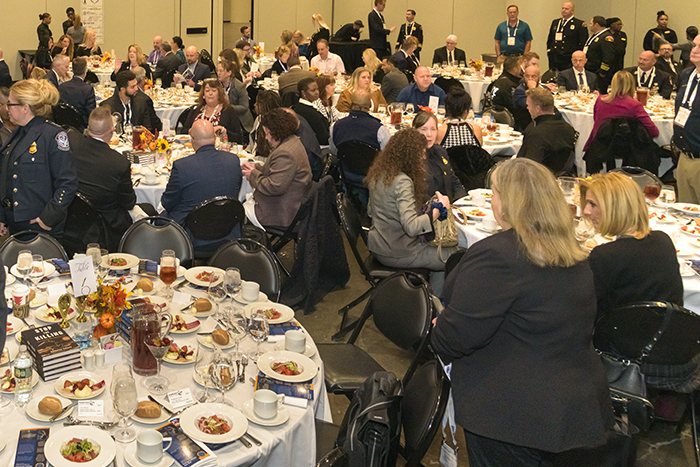
The 2022 exclusive sold-out ‘ASTORS’ luncheon featured representatives of law enforcement, public safety, and industry leaders who came together to honor the selfless service of those who stand on the front lines and those who stand beside them – providing the capabilities and technologies to create a safer world for generations to come.
Last year marked the 20th anniversary of the Department of Homeland Security (DHS), which came out in force to discuss comprehensive collaborations between private and public sectors that have led to the development of intelligence and technologies which serve to protect our nation.
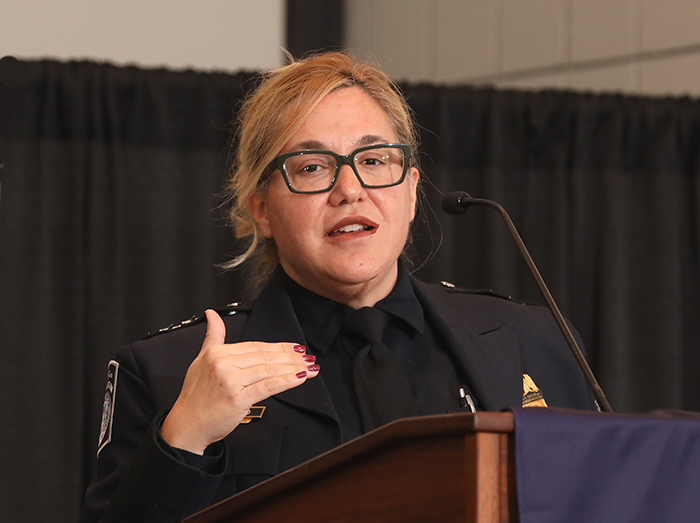
The keynote address was provided by U.S. Customs and Border Protection (CBP) Office of Field Operations (OFO) Deputy Executive Assistant Commissioner (DEAC) Diane Sabatino, who described the changes to CBP through the tragedy of 9/11 and the relentless commitment to its mission and ongoing investment in the latest technologies and innovations to protect our borders and Homeland.
The resounding theme of the DEAC’s remarks was her pride in the women and men of the CBP and their families who support them.
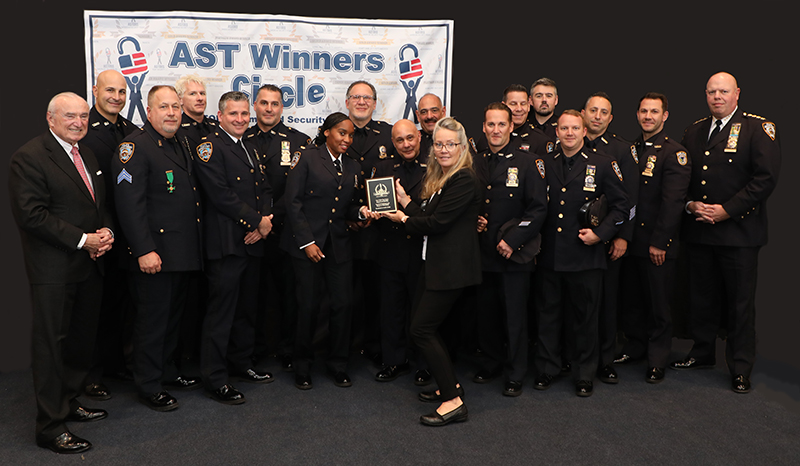
AST was also joined by Legendary Police Commissioner William Bratton, who spoke about his love for the City of New York, the Profession of law enforcement to which he has dedicated his life, and for which he continues to drive thought leadership and innovation.
New York City Police Department (NYPD) Chief of Department Kenneth Corey, came out to address Luncheon attendees and shared some of his experiences and the changes in policing he’s witnessed over his more than three decades of service.
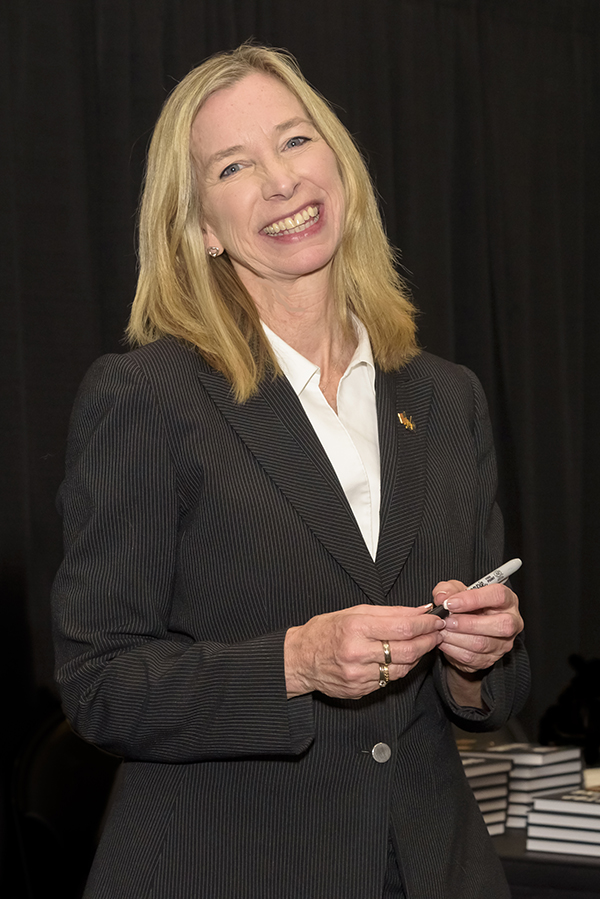
FDNY Chief Joseph Jardin honored the men and women of the FDNY, not only those who currently serve but all of those who have selflessly served, with special recognition of those lost on 9/11.
Chief Jardin spoke about the continuing health battle of many following 9/11 with cancer and respiratory disease, yet now knowing the full consequences, would not have made a different decision to respond.
As Chief Jardin noted, mission-driven service is the lifeblood of every firefighter, volunteer, and sworn member, and has been so throughout the history of the Fire Service.
Former head of the FBI’s active shooter program, Katherine Schweit joined AST to sign complimentary copies of her book, ‘STOP THE KILLING: How to End the Mass Shooting Crisis, thanks to the generosity of our 2022 ‘ASTORS’ Awards Sponsors.
The 2023 ‘ASTORS’ Awards Program is Proudly Sponsored by Platinum Event Sponsor: NEC National Security Systems (NSS)
And Our RETURNING Premier Sponsors:
ATI Systems, Automatic Systems of America,
Rajant Corporation, RX Global, SIMS Software, and American Security Today!
In 2022, AST was pleased to welcome the esteemed New York City Fire Department (FDNY); the New York City Police Department (NYPD); and the NYC Hospital Police, as well as Executive Management from the U.S. Cybersecurity and Infrastructure Security Agency (CISA), and many other DHS agencies, Federal law enforcement agencies, and private/public partnerships such as the National Association of Women Law Enforcement Executives (NAWLEE), the 30×30 Initiative, a coalition of professionals advancing the representation of women in policing; and Operation Lifesaver, Inc. (OLI) (rail safety advocates).
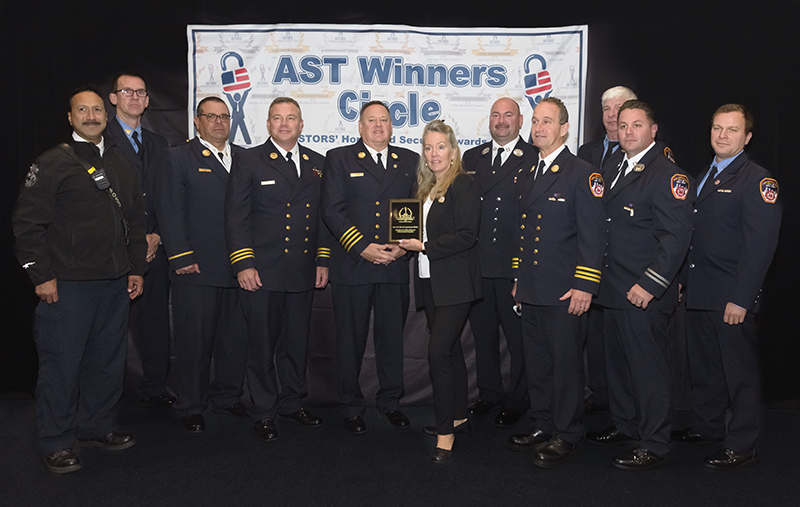
The prestigious Annual ‘ASTORS’ Homeland Security Awards Program highlights the most cutting-edge and forward-thinking security solutions coming onto the market today, to ensure our readers have the information they need to stay ahead of the competition and keep our Nation safe – one facility, street, and city at a time.
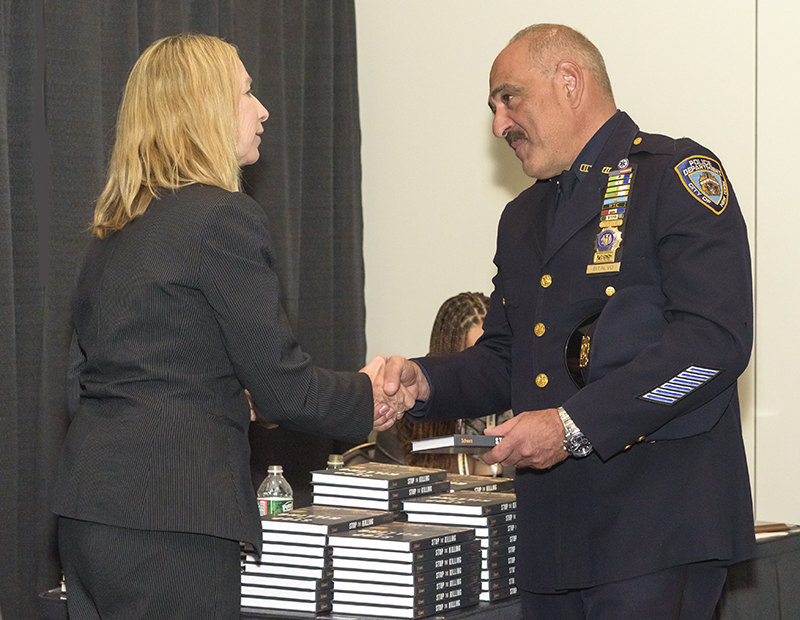
In 2022 over 240 distinguished guests representing Federal, State, and Local Governments, and Industry Leading Corporate Firms gathered from across North America, Europe, and the Middle East to be honored among their peers in their respective fields.
Each year, to keep our communities safe and secure, security dealers, installers, integrators, and consultants, along with corporate, government, and law enforcement/first responder practitioners, convene in New York City to network, learn and evaluate the latest technologies and solutions from premier exhibiting brands at ISC East, the Natural Disaster & Emergency Management Expo (NDEM EXPO), and the ASIS NYC Expo.
ISC East is the Northeast’s leading security & public safety event, hosted in collaboration with sponsor Security Industry Association (SIA) and in partnership with ASIS NYC.

 Corporate firms, the majority of which return year to year to build upon their Legacy of Wins, include:
Corporate firms, the majority of which return year to year to build upon their Legacy of Wins, include:
Advanced Detection Technologies, AMAROK, ATI Systems, Axis Communications, Automatic Systems, BriefCam, Canon U.S.A., Cellbusters, CornellCookson, CyberArk Fortior Solutions, guardDog.ai, Hanwha Techwin of America, High Rise Escape Systems, IPVideo Corporation, Konica Minolta Business Solutions, NEC National Security Systems, NICE Public Safety, OnSolve, PureTech Systems, Quantum Corporation, Rave Mobile Safety, Regroup Mass Notification, Robotic Assistance Devices, Rajant Corporation, SafeLogic, Select Engineering Services LLC, Singlewire Software, SolarWinds Worldwide, Teledyne FLIR, Valor Systems, and West Virginia American Access Control Systems, just to name a few!
Why American Security Today?
The traditional security marketplace has long been covered by a host of publications putting forward the old-school basics to what is Today – a fast-changing security landscape.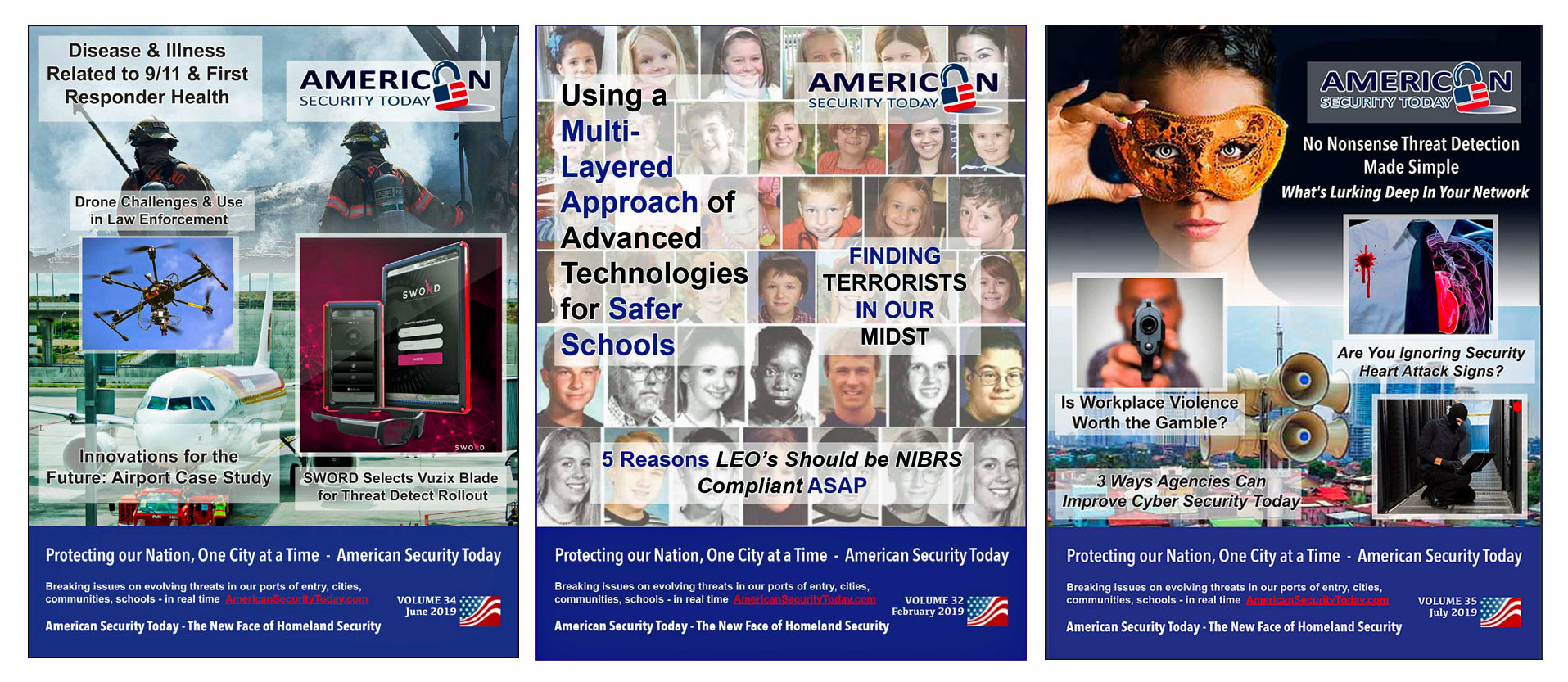
American Security Today is uniquely focused on the broader Homeland Security & Public Safety marketplace with over 75,000 readers at the Federal, State, and local levels of government as well as firms allied to the government.
American Security Today brings forward a fresh compelling look and read with our customized digital publications that hold readers’ eyes throughout the story with cutting-edge editorial that provides solutions to their challenges.
Harness the Power of the Web – with our 100% Mobile Friendly Publications

AST Digital Publications are distributed to over 75,000 qualified government and homeland security professionals, in federal, state, local, and private security sectors.
‘PROTECTING OUR NATION, ONE CITY AT A TIME’
AST Reaches both Private & Public Experts, essential to meeting these new challenges.
Today’s new generation of public safety and security experts need real-time knowledge to deal with domestic and international terrorism, lone wolf attacks, unprecedented urban violence, shifts in society, culture, and media bias – making it increasingly difficult for Homeland Security, Law Enforcement, First Responders, Military and Private Security Professionals to implement coordinated security measures to ensure national security and improve public safety.
These experts are from Government at the federal, state, and local levels as well as from private firms allied to the government.
AST provides a full plate of topics in our AST Monthly Magazine Editions, AST Website, and AST Daily News Alerts, covering 23 Vital Sectors such as Access Control, Perimeter Protection, Video Surveillance/Analytics, Airport Security, Border Security, CBRNE Detection, Border Security, Ports, Cybersecurity, Networking Security, Encryption, Law Enforcement, First Responders, Campus Security, Security Services, Corporate Facilities, and Emergency Response among others.
AST has Expanded readership into integral Critical Infrastructure audiences such as Protection of Nuclear Facilities, Water Plants & Dams, Bridges & Tunnels, and other potential targets of terrorism.
Other areas of concern include Transportation Hubs, Public Assemblies, Government Facilities, Sporting & Concert Stadiums, our Nation’s Schools & Universities, and Commercial Business Destinations – all enticing targets due to the large number of persons and resources clustered together.
To learn more, please see the 2022 ‘ASTORS’ CHAMPIONS Edition Fully Interactive Magazine – the Best Products of 2022 ‘A Year in Review.’
The Annual CHAMPIONS edition reviews ‘ASTORS’ Award Winning products and programs, highlighting key details on many of the winning firm’s products and services, including video interviews and more.
 The 2022 CHAMPIONS serves as your Go-To Source through the year for ‘The Best of 2022 Products and Services‘ endorsed by American Security Today – and can satisfy your agency’s and/or organization’s most pressing Homeland Security and Public Safety needs.
The 2022 CHAMPIONS serves as your Go-To Source through the year for ‘The Best of 2022 Products and Services‘ endorsed by American Security Today – and can satisfy your agency’s and/or organization’s most pressing Homeland Security and Public Safety needs.
From Physical Security (Access Control, Critical Infrastructure, Perimeter Protection, and Video Surveillance Cameras and Video Management Systems), to IT Security (Cybersecurity, Encryption, Data Storage, Anti-Malware, and Networking Security – to name a few), the 2022 ‘ASTORS’ CHAMPIONS EDITION has what you need to Detect, Delay, Respond to, and Mitigate today’s real-time threats in our constantly evolving security landscape.
It also features guest editorial pieces from some of the security industry’s most respected leaders and recognized firms in the 2022 ‘ASTORS’ Awards Program.
For more information on All Things American Security Today, as well as the 2023 ‘ASTORS’ Awards Program, please contact Michael Madsen, AST Publisher at mmadsen@americansecuritytoday.com.
AST strives to meet a 3 STAR trustworthiness rating, based on the following criteria:
- Provides named sources
- Reported by more than one notable outlet
- Includes supporting video, direct statements, or photos




















